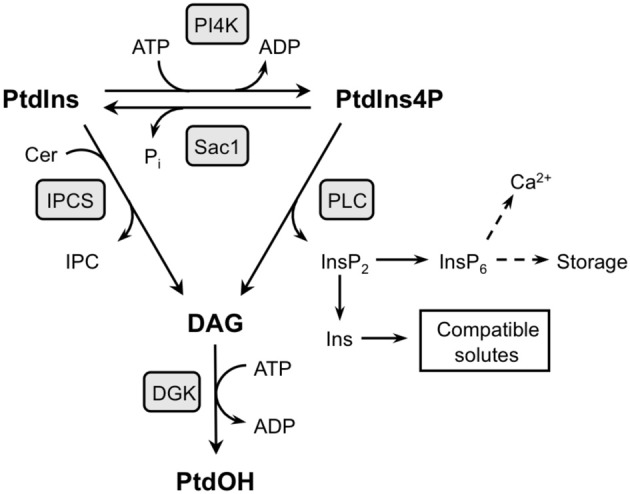Figure A1.

Two pathways with the potential to generate DAG and PtdOH at the expense of PtdIns4P. PtdIns4P is suggested to be the substrate of cold-induced PLC activity which not only generates DAG, but at the same time releases InsP2 that can be converted to InsP6 and/or Ins. The latter products may have a functional relevance in the stress response because InsP6 is a signaling compound in plants, and Ins is a precursor to compatible solutes (Vermeer and Munnik, 2010). Alternatively, inositolphosphorylceramide synthase (IPCS) generates DAG while transferring the InsP headgroup from PtdIns to ceramide (Cer), generating inositolphosphorylceramide (IPC). The PtdIns substrate in this conversion can be derived from PtdIns4P dephosphorylation, as, in yeast, through Sac1 activity. DAG generated via either of these pathways may subsequently be phosphorylated by DGK to generate PtdOH.
